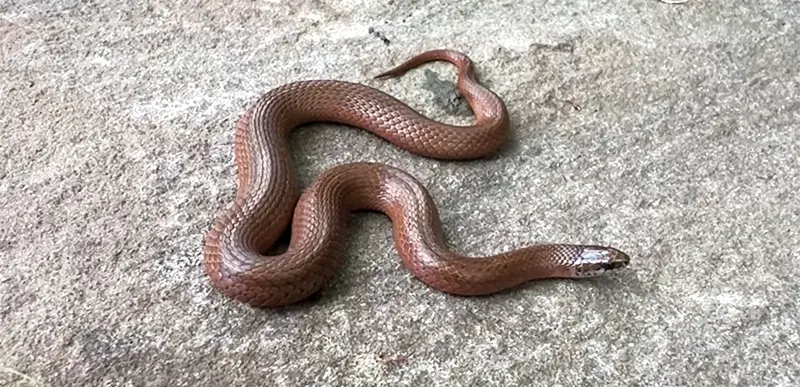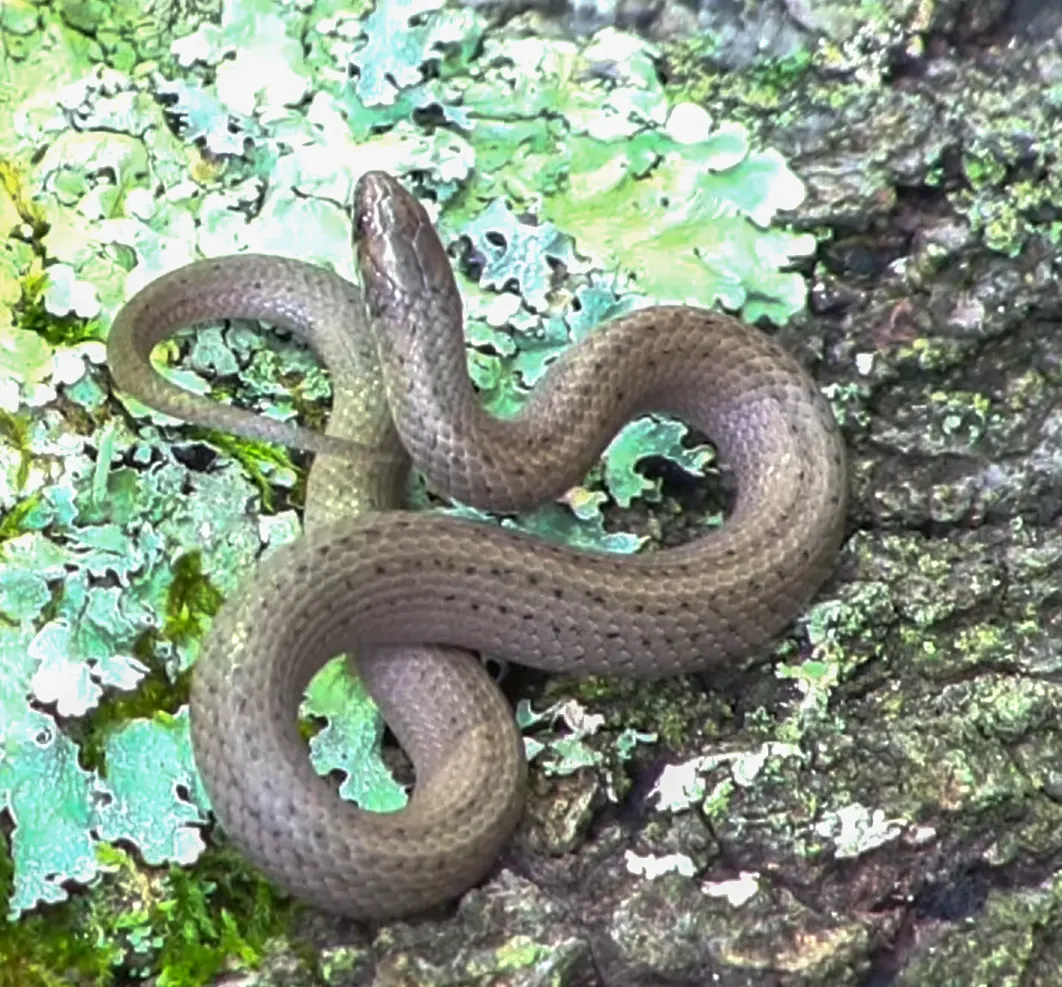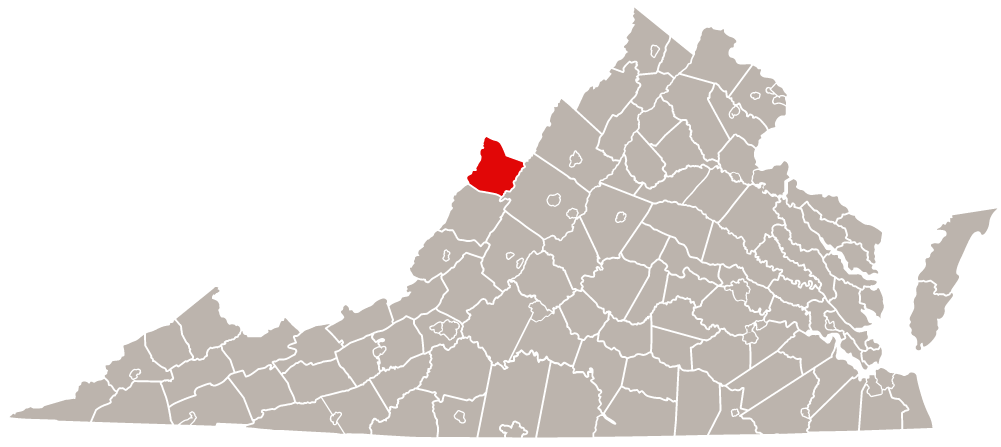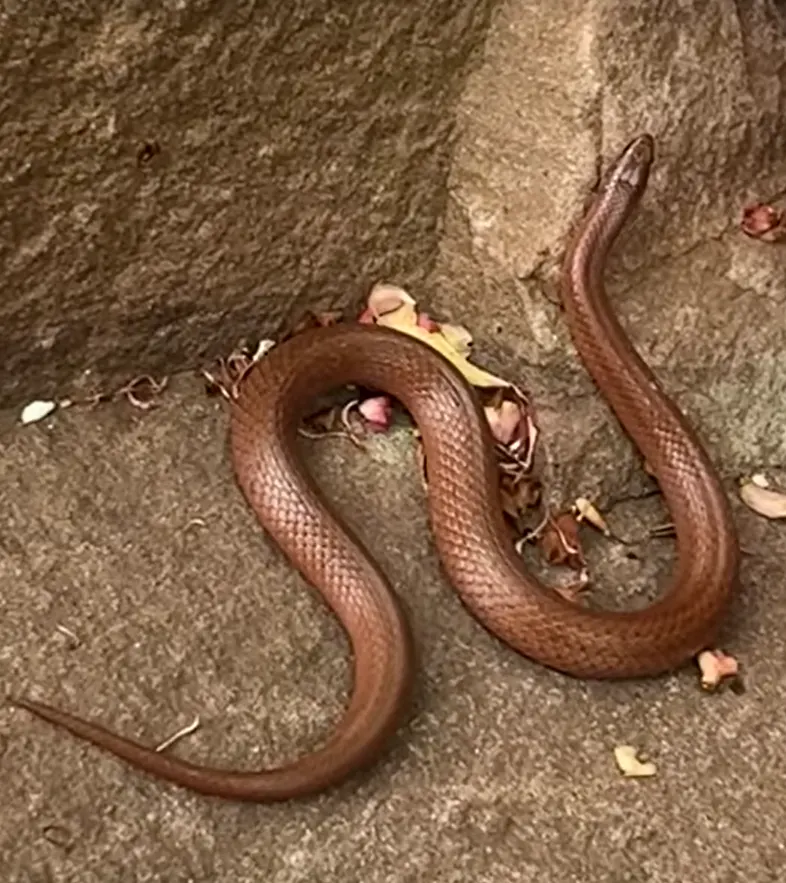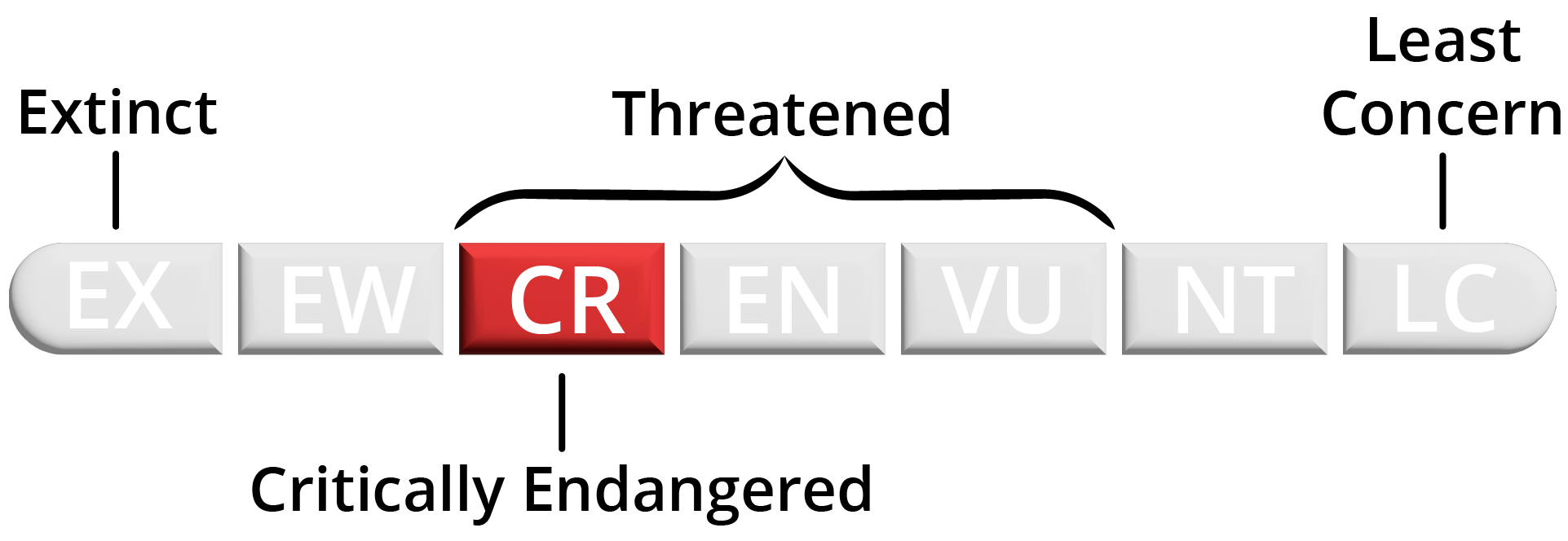
- Scientific Name
- Virginia valeriae pulchra
- Range
- Highland County
- Also Called
- None Available
- Venomous
- No
- Features
- Reddish-Brown to Dark-Gray Body, With Black Flecks on Side With a Cream Belly
- Prey
- Earthworms, Small Soft-bodied Insects
- Litter Size
- 2 - 9 Live Young per Birth
- Life Span
- Unknown
- Length
- 11 Inches
Quick Links for Mountain Earthsnake
Mountain Earthsnake Description
Mountain Earthsnake Appearance
Size
This snake is normally around 11 inches long, the longest recorded here in Virginia is 12.6 inches long. The largest recorded was 15.5 inches long.
Juveniles tend to be more than 3 – 4.5 inches long.
Mountain Earthsnake Behavior
These Earthsnakes are not aggressive to humans and will not bite even when handled. When threatened this snake will choose to freeze, or try to escape rather than to bite.
These snakes are secretive and solitary. They hide underground and hide under rocks, logs, and other debris. They are diggers and use their pointed snout to dig in the ground to either hide or to search for their favorite prey, earthworms.
It is illegal in Virginia to keep Wild Snakes as pets especially those that are endangered
Range and Habitat of The Mountain Earthsnake
Range
These snakes can only be found in Highland County Virginia. Due to their low numbers, and small range, Virginia has classified them as Critically Endangered in the State of Virginia and Vulnerable for the entire species.
In the rest of the United States, they can be found at the northwestern edge of the Appalachians. They are most common in the Pennsylvania and West Virginia area.
Habitat
They are found in forested areas. But they are frequently found in short, grassy slopes with sandstone rocks, especially forested areas near water.
Diet
Their main diet consists of Earthworms like it’s cousin the Rough Earthsnake. However, they are also willing to eat soft small insects such as grubs, slugs, and snails.
Reproduction and Young
Reproduction
Mating for these snakes likely in the spring and fall and will give birth in the summer or fall to 2 to 9 live young.
